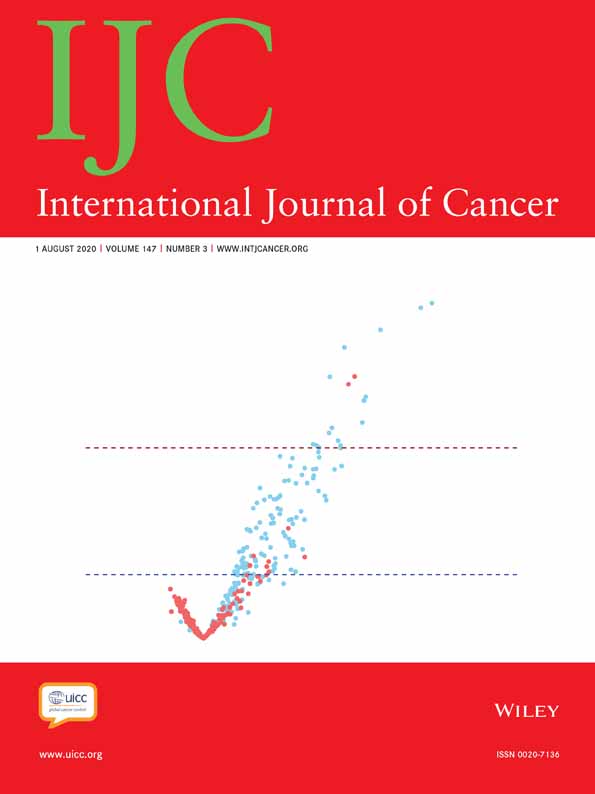Cumulative exposure to premenopausal obesity and risk of postmenopausal cancer: A population-based study in Icelandic women
Abstract
Obesity, often assessed at one point in time, is an established risk factor of several types of cancer, however, associations with cumulative exposure to obesity across the life course are not well understood. We investigated the relationship between combined measures of duration and intensity of premenopausal overweight and obesity and the incidence of postmenopausal breast, endometrial, and colorectal cancers in Icelandic women. Body mass index (BMI) trajectories between ages 20 and 50 of 88,809 women from the Cancer Detection Clinic Cohort were predicted using growth curve models. Indicators of overweight and obesity duration and intensity were computed and their association with risk of postmenopausal breast, endometrial, and colorectal cancers was examined using multivariate Cox models for subjects followed-up beyond the age of 50 (n = 67,488). During a mean follow-up of 17 years, incident events of 3,016 postmenopausal breast, 410 endometrial and 987 colorectal cancers were ascertained. Each 0.1 kg/m2 per year increase in BMI between ages 20 and 50 was positively associated with risks of postmenopausal breast, endometrium and colorectal cancers with hazard ratios equal to 1.09 (95% Confidence Interval (CI):1.04–1.13), 1.31 (95% CI: 1.18–1.44) and 1.10 (95% CI: 1.00–1.21), respectively. Compared to women who were never obese, cumulative BMI × years of obesity were linearly positively associated with risk of endometrial cancer, whereas the association with breast cancer was initially positive, but leveled off with increasing cumulative BMI × years. Cumulative exposure to obesity may provide additional insights into the etiology of cancer and should be considered in future studies that assess obesity–cancer relationships.
Abstract
What's new?
When investigating the risk of cancer associated with obesity, it can be challenging to summarize obesity in a metric that is most relevant to risk. Here the authors found that cumulative exposure – taking into consideration exposure duration and intensity – to premenopausal obesity was positively associated with risks of postmenopausal cancers, most prominently endometrial cancer but also breast and colorectal cancer. The authors propose that assessing the cumulative exposure to obesity may provide additional insights into the etiology of cancer.
Conflict of interest
The authors declare that they have no conflict of interest.
Open Research
Data availability
The data that support the findings of our study are available from Dr Laufey Tryggvadóttir ([email protected]) with the permission of Dr Laufey Tryggvadóttir. Restrictions apply to the availability of these data, which were used under license for our study.




